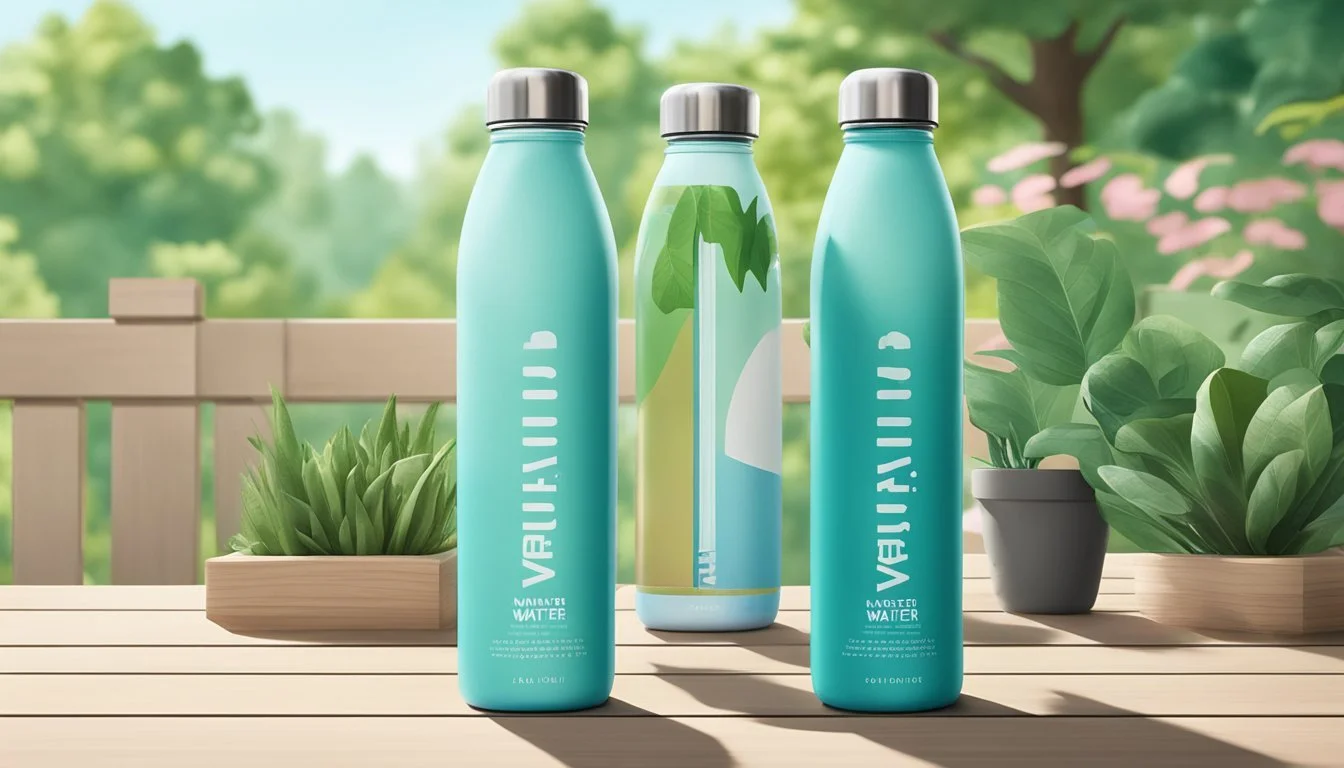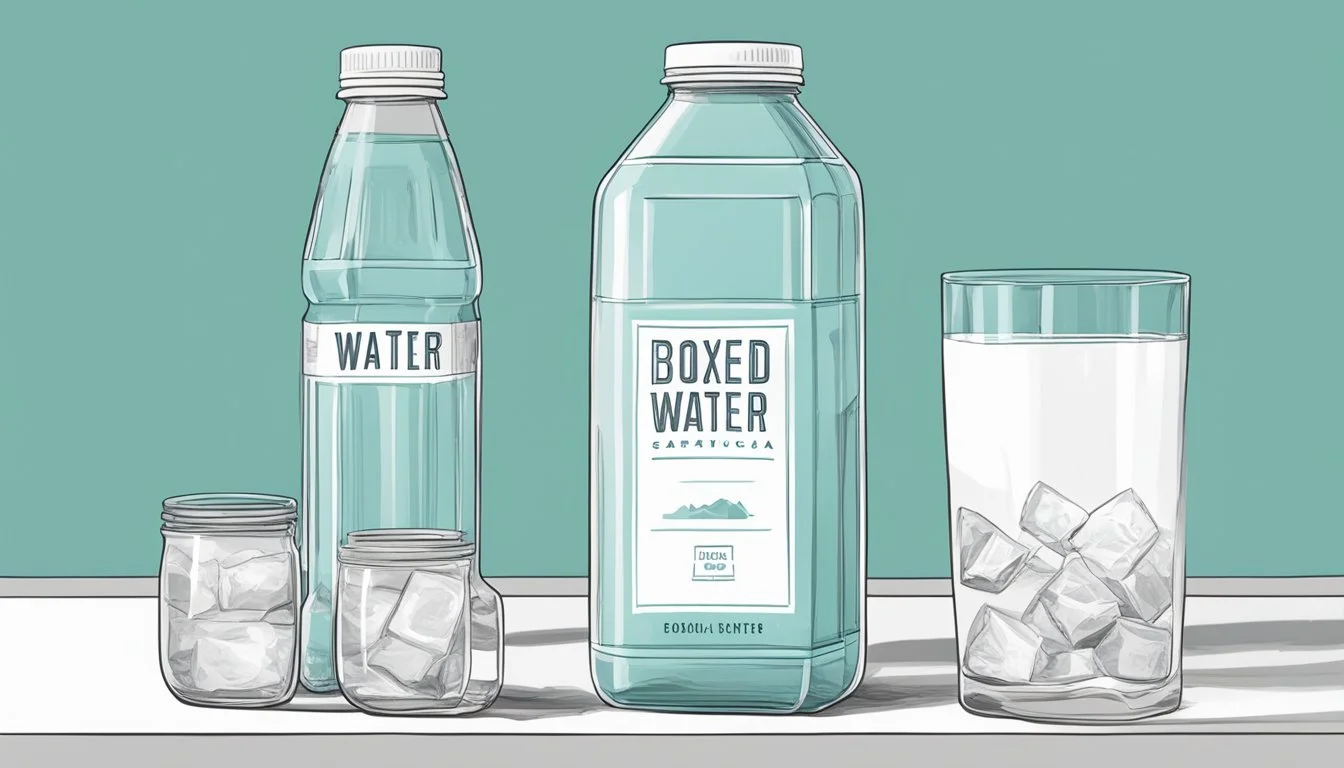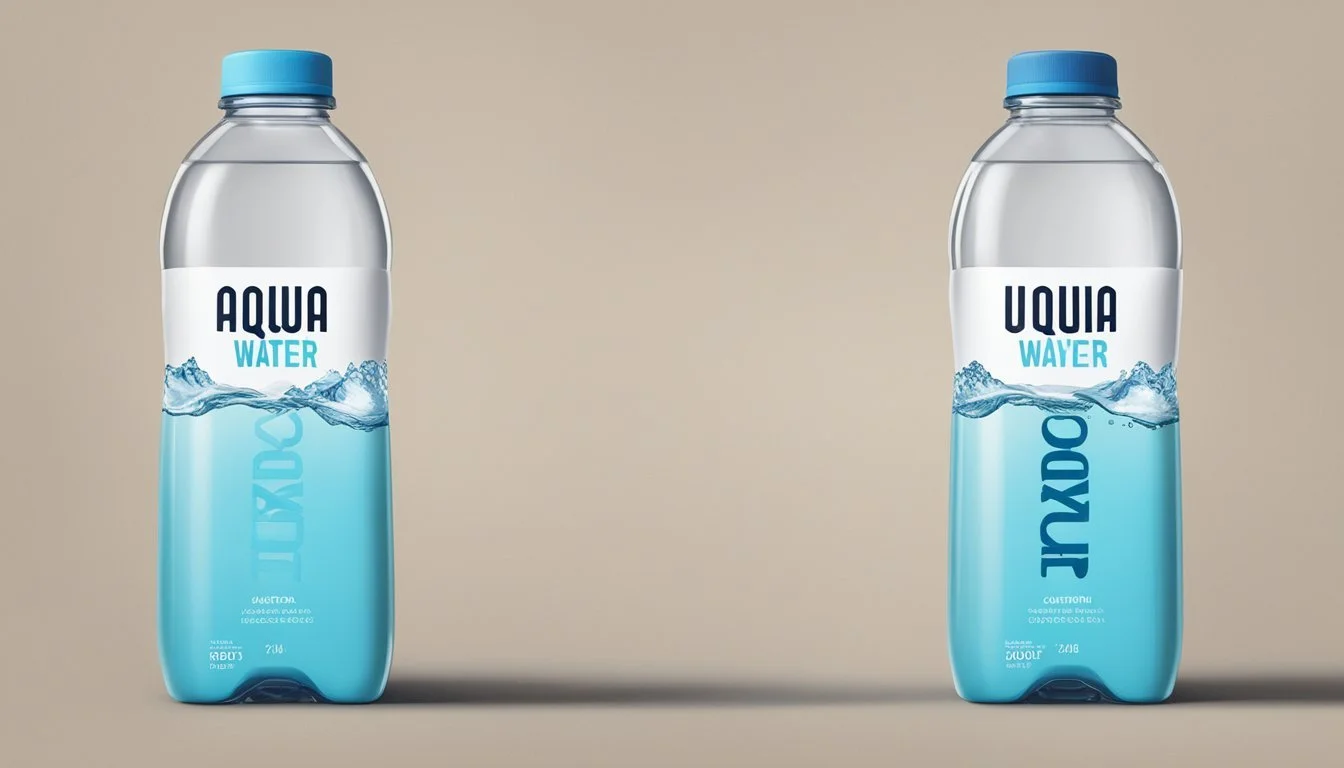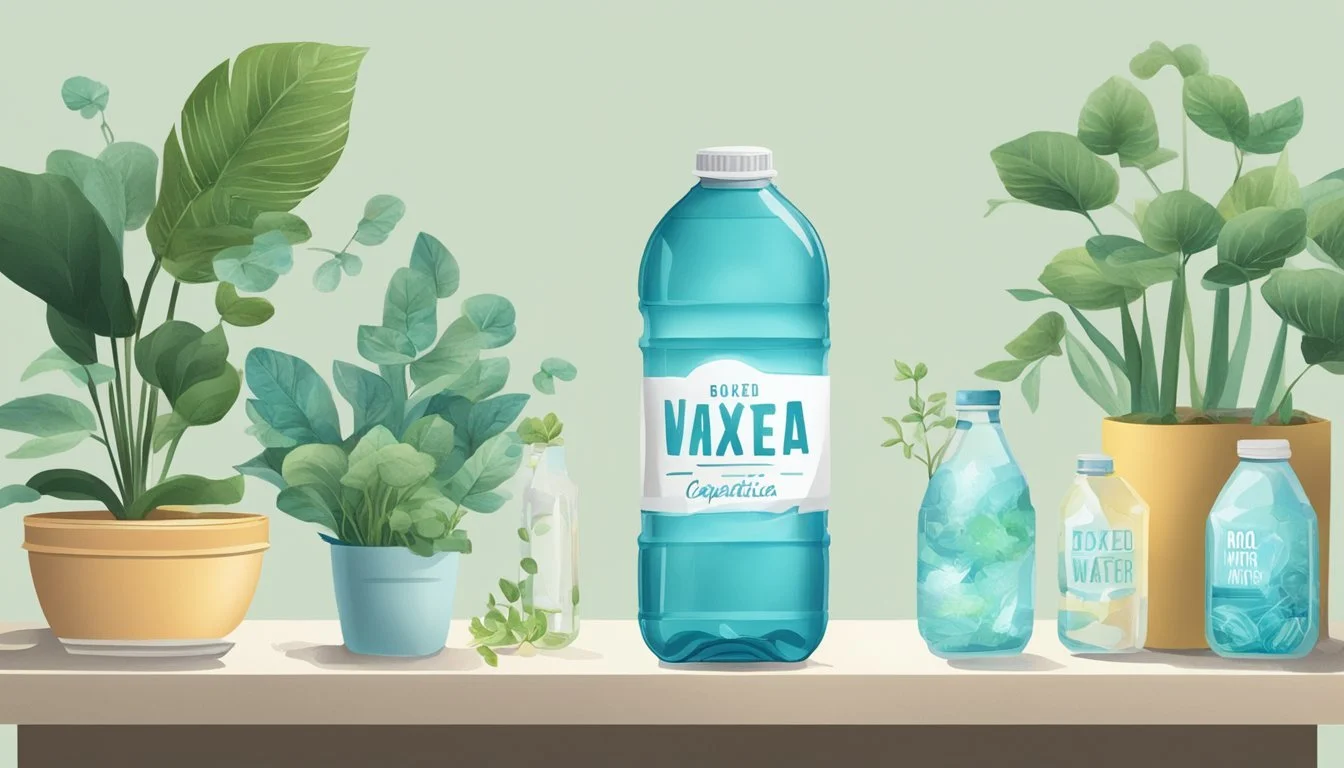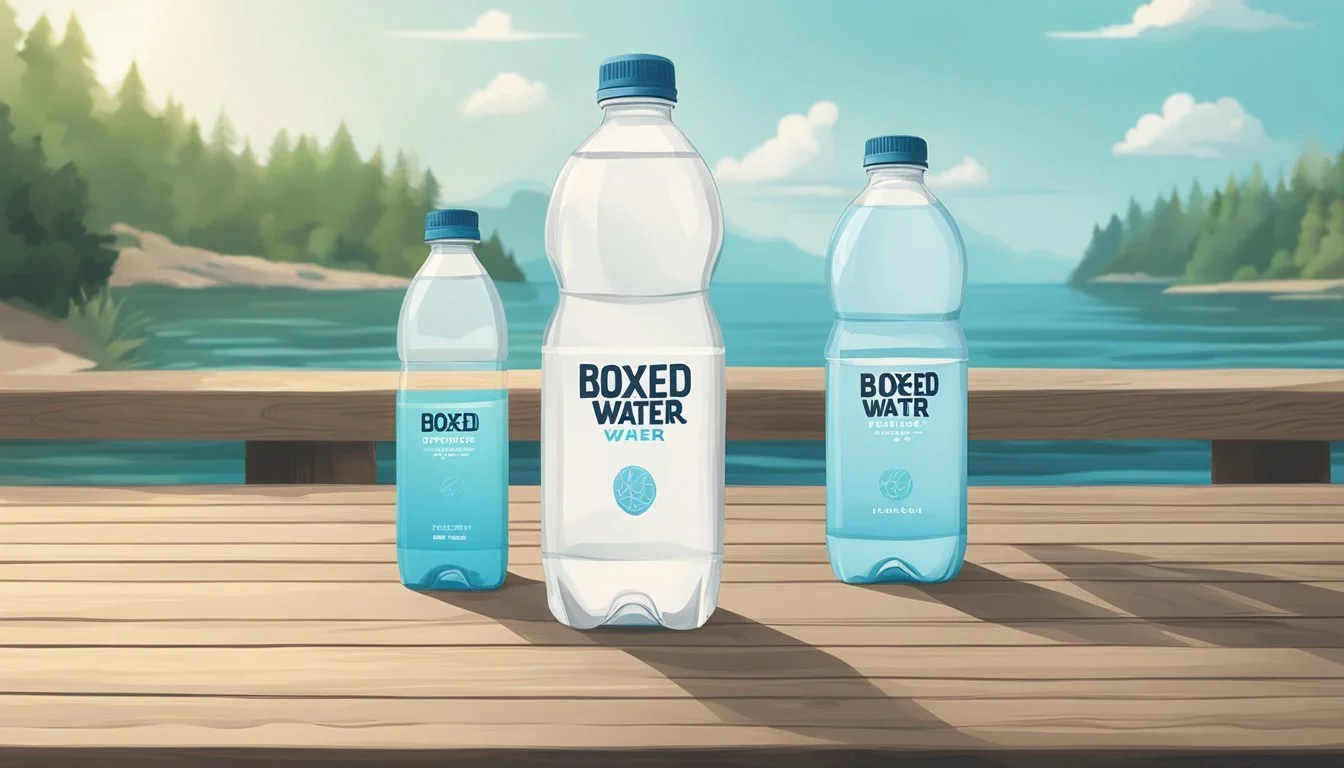Boxed Water vs. Aqua Carpatica
A Comparative Analysis
Choosing between Boxed Water and Aqua Carpatica can be a task that mixes environmental concerns with personal taste preferences. Boxed Water offers an eco-friendly solution with its sustainable paper, aluminum, and plastic packaging, while Aqua Carpatica prides itself on its naturally nitrate-free and low sodium content, making it a healthier option for those cautious about their mineral intake.
For those prioritizing environmental sustainability, Boxed Water presents a more appealing choice. Its cartons are crafted from 74 percent paper, which significantly reduces plastic waste. On the other hand, Aqua Carpatica highlights health benefits that come with its pure, clean water free from nitrates, which sets it apart within the bottled water market.
Each of these waters has unique selling points that cater to different preferences. Whether one's focus is on reducing environmental impact or consuming water free from specific minerals, understanding these aspects can help in making an informed decision.
Understanding Boxed Water
Boxed Water offers a sustainable alternative to traditional bottled water with innovative packaging and efforts to reduce environmental impact. Key topics include the product's components and benefits.
What is Boxed Water?
Boxed Water is a brand committed to sustainability by offering water packaged primarily in cartons rather than plastic bottles.
The cartons contain approximately 74% paper derived from sustainably harvested trees, 1% aluminum for added strength, and 25% plant-based plastic to ensure waterproofing and full sealing. The water inside undergoes purification processes such as ultraviolet light treatment, carbon filtration, and reverse osmosis to remove impurities and contaminants. Overall, Boxed Water focuses on reducing plastic waste and promoting carton recycling to minimize environmental footprint.
Benefits of Boxed Water
Boxed Water's main advantage is its eco-friendly packaging, which significantly lowers plastic use. The cartons are designed to be 92% plant-based, utilizing renewable materials, and drastically cutting down on fossil fuel consumption.
Consumers also benefit from the enhanced purification methods that ensure clean and safe drinking water. The packaging supports recycling efforts, aligning with environmental sustainability goals. With a commitment to reducing the carbon footprint, Boxed Water demonstrates a model for other beverage companies to follow, emphasizing environmental responsibility without compromising water quality. These benefits make it a favorable choice for eco-conscious consumers seeking a reliable source of hydration.
Unveiling Aqua Carpatica
Aqua Carpatica, with its origins in the pristine Carpathian Springs of Romania, stands out for its naturally nitrate-free water and low sodium levels. Known for its environmental sustainability, it offers a pure hydration experience.
Origin and Source
Aqua Carpatica hails from the unspoiled Carpathian Mountains in Romania, an area renowned for its natural beauty and purity.
The water is sourced from deep underground springs that are naturally protected from pollution. This region, often referred to as the last wild forest of Europe, ensures the water remains untouched by human intervention. The unique geological formations of the Carpathian Mountains contribute to the water’s distinct mineral profile, making it naturally alkaline and rich in essential minerals.
Unique Selling Propositions
One of the most compelling features of Aqua Carpatica is its naturally nitrate-free composition. Nitrates are often a concern in bottled water due to agricultural runoff, but Aqua Carpatica's pristine source eliminates this worry. Additionally, it has a low sodium content, which enhances its health benefits.
The mineral water is naturally alkaline, maintaining a pH balance that is beneficial for the body. Aqua Carpatica also emphasizes environmental responsibility. The brand uses eco-friendly packaging and supports initiatives aimed at preserving natural resources. This commitment to sustainability not only protects the environment but also ensures the continued purity of the water source.
Environmental Impact
Examining the environmental impact of Boxed Water and Aqua Carpatica involves looking at packaging materials, recycling options, and overall carbon footprint. These elements help determine which product is more sustainable.
Packaging and Recycling
Boxed Water uses paper-based cartons, which contain a small amount of plastic, and has a plant-based cap. This design reduces reliance on single-use plastic bottles. Yet, the effectiveness depends on the availability of carton recycling facilities.
Plastic bottles, such as those used by Aqua Carpatica, offer widespread recycling options. However, they contribute significantly to plastic pollution if not recycled properly. While reusable bottles are ideal, the cartons tend to have a lower overall impact if local recycling is available. Using large jugs can also help minimize single-use packaging.
In comparison, aluminum and glass alternatives present different challenges, such as higher energy consumption during production. Boxed Water's approach tries to balance sustainability with practicality, aiming to reduce the environmental footprint by making recyclable packaging widely accessible.
Carbon Footprint Analysis
Boxed Water has conducted studies to understand its overall carbon footprint compared to plastic and aluminum packaging. Results show that their cartons use 43% less fossil fuel, create 1,084% less ozone impact, and reduce smog emissions significantly compared to aluminum.
Aqua Carpatica's plastic bottles have a different carbon footprint profile, which can be larger due to production and recycling challenges. Avoiding plastic and switching to Boxed Water can thus lower one's carbon footprint.
When comparing options, Boxed Water's CarbonNeutral® certification for its 500mL cartons highlights its commitment to reducing carbon emissions. It's part of ongoing efforts to minimize the environmental costs of water packaging, presenting a strong case for favoring boxed alternatives when aiming for greener choices.
Health and Hydration
In terms of health and hydration, it's essential to evaluate the hydration capacity, mineral content, and added electrolytes of boxed water and Aqua Carpatica. Each water has unique characteristics that impact their effectiveness and suitability for maintaining health.
Hydration Essentials
Hydration is crucial for maintaining bodily functions such as regulating temperature and lubricating joints. Both boxed water and Aqua Carpatica aim to provide optimum hydration.
Boxed water, particularly the brand "Boxed Water Is Better," is praised for its refreshing, neutral taste that encourages regular drinking. This helps users stay consistently hydrated throughout the day.
Aqua Carpatica is renowned for being naturally nitrate-free and low in sodium, making it appealing for those who are health-conscious. It ensures hydration without added impurities that can be found in tap water.
Electrolytes and Mineral Content
Electrolytes and minerals play a significant role in how water supports bodily functions. Boxed Water typically does not emphasize additional electrolytes or high mineral content, focusing instead on providing pure, crisp hydration.
Aqua Carpatica sets itself apart with its naturally balanced mineral content and essential electrolytes. This not only improves hydration efficiency but also contributes to overall health. Its low sodium levels are particularly beneficial in maintaining cardiovascular health.
Core Hydration, another competitor mentioned, highlights optimal pH and added electrolytes, although this is not central to the discussion between boxed water and Aqua Carpatica.
In both cases, the choice between the two can come down to specific health requirements and taste preferences. Each product provides essential hydration, but the added health benefits vary depending on their unique properties.
Taste and Purity
When it comes to choosing between Boxed Water and Aqua Carpatica, taste and purity are two critical factors that many consumers consider. Each brand has distinct qualities that impact the drinking experience and health benefits.
The Significance of Taste
The taste of water varies significantly between brands due to various factors such as the source and mineral content. Boxed Water, known for its eco-friendly packaging, offers a clean and crisp taste. Some flavor-enhanced varieties like grapefruit and lemon provide a refreshing twist, enhancing the drinking experience.
In contrast, Aqua Carpatica prides itself on a naturally pure and fresh taste, attributed to its filtration through ancient aquifers. This results in a distinct, high-quality flavor appreciated by water sommeliers. A taste test reveals Aqua Carpatica's refined and delicate profile, making it a favorite among those seeking premium bottled water.
Purity Testing and Comparison
Purity is another essential aspect of bottled water. Boxed Water is tested to ensure it meets high standards, free from contaminants and pollutants. Its packaging also contributes to its sustainability, as it reduces plastic waste significantly.
Aqua Carpatica, on the other hand, stands out for its naturally nitrate-free composition. This water undergoes an extensive filtration process over 13 years through the Carpathian Mountains' aquifers, resulting in low sodium levels. Such purity levels make Aqua Carpatica a superior choice for health-conscious consumers.
Both brands excel in providing pure water, but each has unique advantages. Boxed Water's eco-friendly packaging and flavor options make it appealing, whereas Aqua Carpatica's exceptional natural purity and taste cater to premium market preferences.
Comparative Analysis
This section will compare Boxed Water and Aqua Carpatica on two critical fronts: cost and public perception, providing a detailed examination of each aspect.
Price Comparison
When it comes to price, Boxed Water and Aqua Carpatica present different value propositions. Boxed Water typically offers a more economical option for consumers focused on sustainability. Its packaging, primarily paper-based, helps keep costs down compared to traditional bottled water like Fiji or Evian.
Aqua Carpatica, renowned for its premium quality and naturally low nitrate levels, often carries a higher price tag. This positions it closer to upscale brands such as Smartwater and Voss. Despite the higher cost, its pricing reflects its emphasis on purity and specialized mineral content.
Shoppers looking for everyday hydration might lean towards Boxed Water for its affordability, while those prioritizing natural mineral-rich water might find Aqua Carpatica more appealing despite its higher cost.
Market Perception
Market perception varies significantly between Boxed Water and Aqua Carpatica. Boxed Water, with its eco-friendly packaging, captures the attention of environmentally conscious consumers. It has been favored for its commitment to sustainability, resonating well with those looking to reduce plastic waste.
Aqua Carpatica, on the other hand, is perceived as a premium brand, appealing to health-conscious individuals who emphasize the importance of pure, natural water sources. Its low nitrate content and rich mineral profile set it apart from mainstream brands like Dasani and Aquafina, gaining trust among consumers who prioritize purity.
Both brands occupy distinct niches in the market, with Boxed Water appealing to eco-friendly buyers and Aqua Carpatica to those seeking high-quality, health-oriented water.
Consumer Accessibility
Consumers evaluate the accessibility of Boxed Water and Aqua Carpatica based on availability across different platforms and the convenience of purchase and use. Both brands aim to cater to eco-conscious buyers while ensuring easy access to their products.
Availability Across Platforms
Boxed Water is available in many major retail stores and online, including Amazon. Its presence in big supermarkets in California and other states ensures that shoppers can find it in physical stores. The brand also partners with various subscription services for regular deliveries.
Aqua Carpatica focuses more on physical retail distribution, with a strong presence in upscale grocery stores and speciality markets. Though it has an online presence, it might not be as widely accessible on popular e-commerce platforms like Amazon.
The differences in distribution channels can influence consumer choice, based on how they prefer to shop.
Consumer Convenience Factor
Boxed Water markets itself heavily on sustainability, appealing to environmentally conscious consumers. The paper-based packaging is easy to recycle and carry, which is ideal for water on the go. It also offers various pack sizes to fit different needs, from single units to multi-packs.
Aqua Carpatica highlights its naturally occurring minerals and purity. Its elegant glass or BPA-free plastic bottles may appeal to those prioritizing taste and health. These bottles can be reused, adding a slight advantage in durability compared to paper boxes.
Convenience also involves how easy it is to incorporate the water into daily routines. Boxed Water's innovative packaging and delivery options may offer a slight edge here.
Ethical and Social Responsibility
This section explores the ethical practices and social initiatives of Boxed Water and Aqua Carpatica, focusing on sustainability, corporate partnerships, and accountability in their operations.
Initiatives and Partnerships
Boxed Water has positioned itself as a leader in sustainability, promoting renewable resources. Their cartons are 92% plant-based, using a mix of paper, aluminum, and plastic film.
They partner with the Ocean Blue Project for ocean cleanup efforts and support reforestation by planting trees with every purchase. Collaborations like these underscore their commitment to reducing pollution.
Aqua Carpatica emphasizes the natural purity of their water, which is naturally nitrate-free with low sodium levels. While not as vocal about environmental initiatives as Boxed Water, their focus on health benefits suggests an ethical stance prioritizing consumer wellness.
Their partnerships and initiatives, if any, are less publicized, highlighting a potential area for growth in social responsibility.
Corporate Accountability
Corporate accountability involves transparent reporting and genuine actions. Boxed Water actively reports on their environmental impact, aiming to combat greenwashing. Their commitment to sustainability aligns with practices seen in companies like Alaska Airlines, known for their eco-friendly policies.
Boxed Water's packaging addresses waste reduction, reducing reliance on PET bottles. The engagement with the Ocean Blue Project also demonstrates accountability in actions beyond mere marketing.
Aqua Carpatica's accountability revolves around their product's health claims. They maintain clear labeling and provide consumer information on water quality.
Though less focused on broad environmental policies, their transparency in product content sets a responsible precedent. Enhanced accountability in broader sustainability efforts could further their reputation in ethical practices.
Looking Ahead
The future of bottled water involves a focus on sustainability and innovation, shaping how consumers choose and use water products.
The Future of Water Consumption
Consumers are increasingly prioritizing sustainable choices. Boxed Water and Aqua Carpatica are part of this shift, utilizing eco-friendly packaging materials.
Reusable water bottles and canned water are gaining popularity as alternatives to traditional plastic bottles. Boxed Water Is Better, for instance, uses cartons made from sustainable paper, aluminum, and plastic film, emphasizing renewability.
Aqua Carpatica attracts consumers focused on health and environmental impact. The nitrate-free composition provides a niche for health-conscious buyers. Awareness of the environmental cost leads to exploring alternative packaging options to minimize the carbon footprint.
Educating the public on the benefits of these practices encourages a sustainable approach to water consumption.
Innovations in the Pipeline
Innovation is critical in making water consumption more eco-friendly and efficient. Companies are exploring advanced filtration methods and packaging materials to enhance purity and reduce waste.
Boxed Water employs ultraviolet light, carbon filtration, and reverse osmosis to ensure high water quality. In terms of packaging, efforts are directed towards improving the reusability and biodegradability of materials used in water cartons and bottles.
Aqua Carpatica is focusing on maintaining natural mineral content while innovating packaging that reduces environmental impact.
Future advancements include smart water bottles that track hydration and materials that decompose more efficiently. The integration of technology with water packaging can lead to smarter, more eco-friendly products that meet consumer demands for both quality and sustainability.

